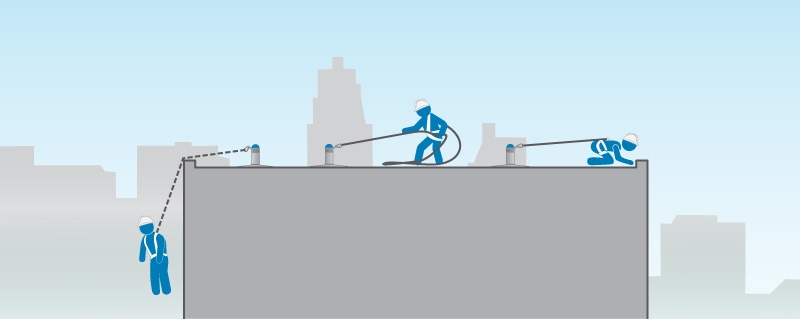Fall protection PPE (Personal Protective Equipment) is designed to protect workers from injuries due to falls from heights. This includes harnesses, lanyards, anchor points, and other devices that ensure safety when working at elevated locations. Here’s a detailed overview of fall protection PPE and instructions for use:

Types of Fall Protection PPE
- Full-Body Harnesses:
- Standard Harness: Distributes the forces of a fall across the chest, thighs, pelvis, and shoulders.
- Positioning Harness: Allows workers to be held in place while leaving their hands free to work.
- Retrieval Harness: Used for confined space entry and retrieval.
- Lanyards:
- Shock-Absorbing Lanyards: Reduce the impact force on the worker during a fall.
- Positioning Lanyards: Allow workers to be positioned and supported while working at height.
- Self-Retracting Lifelines (SRLs): Automatically retract and limit the fall distance.
- Anchor Points:
- Permanent Anchors: Fixed to a structure for long-term use.
- Temporary Anchors: Portable and can be moved to different locations.
- Beam Anchors: Attach to I-beams or other structural components.
- Connecting Devices:
- Carabiners: Connect lanyards, lifelines, and harnesses.
- Rope Grabs: Used on vertical lifelines to provide fall protection.
- Guardrails and Safety Nets:
- Guardrails: Installed around open edges to prevent falls.
- Safety Nets: Used below work areas to catch falling workers or debris.
- Rescue Devices:
- Rescue Kits: Include tools and equipment for retrieving a fallen worker.
- Descent Devices: Allow workers to descend safely from heights.
Selecting Fall Protection PPE
- Type of Work and Environment:
- Choose PPE based on the specific type of work and the environment. Consider factors like height, duration, and the presence of sharp edges or chemicals.
- Standards Compliance:
- Ensure all PPE meets relevant safety standards such as OSHA, ANSI, or CSA.
- Fit and Comfort:
- PPE should fit well and be comfortable to wear for extended periods. Adjustable features help ensure a proper fit.
- Weight Capacity:
- Verify that the PPE can support the worker’s weight, including tools and equipment.
Instructions for Use
- Pre-Use Inspection:
- Inspect all PPE for signs of damage, wear, or degradation. Check for frayed straps, broken buckles, and rusted metal components.
- Ensure the harness is free of cuts, tears, or excessive wear.
- Verify the integrity of anchor points and connecting devices.
- Donning (Putting On) the Harness:
- Hold the harness by the D-ring and shake it to allow all straps to fall into place.
- Step into the harness and pull it over your shoulders.
- Connect chest, waist, and leg straps, ensuring they are snug but not overly tight.
- Adjust all straps for a secure fit. The D-ring should be positioned between the shoulder blades.
- Attaching Lanyards and Lifelines:
- Attach the lanyard or SRL to the D-ring on the harness.
- Connect the other end to a secure anchor point. Ensure the anchor point is above the worker’s head and capable of supporting at least 5,000 pounds per worker attached.
- While Working at Height:
- Maintain 100% tie-off, meaning you are always connected to a secure anchor point.
- Avoid working near unprotected edges without proper fall protection.
- Use guardrails, safety nets, or other passive fall protection systems when possible.
- Post-Use Inspection and Maintenance:
- Inspect the PPE after each use for any signs of damage.
- Clean the PPE according to the manufacturer’s instructions. Avoid using harsh chemicals or abrasive materials.
- Store the PPE in a clean, dry place away from direct sunlight and chemicals.
- Training and Competency:
- Ensure all workers receive training on the proper use, inspection, and maintenance of fall protection PPE.
- Conduct regular refresher training and drills to maintain competency.
- Rescue Planning:
- Have a rescue plan in place for quickly retrieving a fallen worker.
- Ensure all workers are trained in rescue procedures and the use of rescue equipment.
Additional Resources
- Safety Manuals and Guidelines: Follow OSHA, ANSI, CSA, or other relevant safety guidelines.
- Risk Assessments: Conduct regular risk assessments to identify potential fall hazards and determine the appropriate level of protection needed.
- Safety Audits: Perform regular safety audits to ensure compliance with fall protection policies and procedures.

